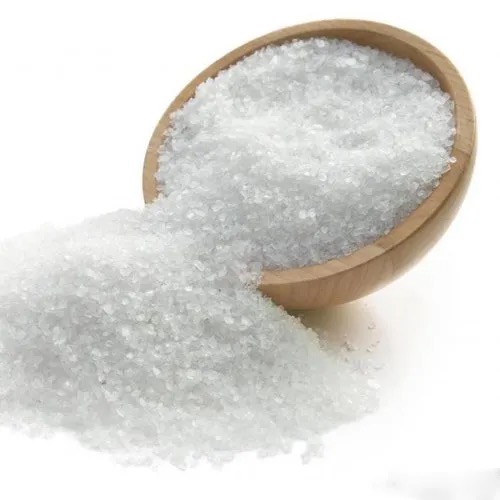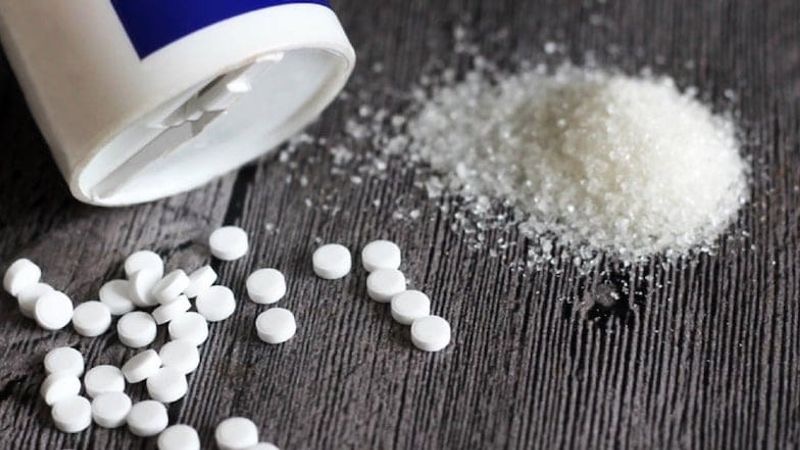Views: 222 Author: Sara Publish Time: 2025-10-22 Origin: Site








Content Menu
● Are Sucralose and Splenda the Same?
>> Pharmaceutical and Dietary Use
● Safety and Health Considerations
● Culinary Properties and Tips
● FAQ
>> 1. What exactly is the difference between sucralose and Splenda?
>> 2. Is sucralose safe to consume?
>> 3. Can sucralose be used for baking?
>> 4. Does sucralose impact blood sugar levels?
>> 5. How is sucralose sweeter than sugar but calorie-free?
In recent years, the rise of health-conscious consumers has increased demand for sweeteners that satisfy the sweet tooth without added calories or health risks. Sucralose and Splenda are two terms often encountered in this domain, sometimes used interchangeably. But what exactly are they, and are they the same? This article explores the science, history, usage, safety, and culinary aspects of sucralose and Splenda, helping you understand their similarities and differences.

Sucralose is an artificial sweetener made through a chemical process that modifies regular sugar (sucrose). By replacing three hydroxyl groups on sugar molecules with chlorine atoms, sucralose becomes about 600 times sweeter than sugar while contributing virtually no calories. Because of this, it has become a popular sugar substitute worldwide.
Chemically, sucralose is a disaccharide with the chlorine atoms replacing specific hydroxyl groups, resulting in a sweetening agent that the body does not metabolize for energy. This resistance to digestion means it passes through the system largely unabsorbed, providing sweetness without the calories typical of sugar.
Splenda is a brand name for a product that contains sucralose as the key sweetening ingredient. Besides sucralose (about 1.1%), Splenda also contains bulking agents such as maltodextrin and dextrose to give it volume and texture similar to sugar. This makes Splenda an easy-to-use alternative in baking and cooking, closely mimicking the properties of sugar in both measure and texture.
Splenda is produced by the American company Heartland Food Products Group, with the sucralose ingredient manufactured by Tate & Lyle, a British company. Since its market introduction, Splenda has become one of the most widely used sugar substitutes, especially in North America.
They are related but not identical:
- Sucralose is the pure artificial sweetener compound, the active ingredient responsible for the sweetness.
- Splenda is a commercial product containing sucralose along with fillers like maltodextrin and dextrose.
Think of sucralose as the chemical entity and Splenda as the branded consumer product that contains it along with other ingredients to improve handling and usability.

Sucralose was discovered in 1976 by scientists working at Tate & Lyle and Queen Elizabeth College, University of London. The discovery occurred somewhat by accident when a researcher was asked to "test" a chlorinated sugar compound but misheard and "tasted" it instead, noticing the compound's extraordinary sweetness. This serendipitous moment led to the development of sucralose as a non-caloric sweetener.
After extensive research and safety studies, sucralose was approved for use starting with Canada in 1991, followed by approvals in Australia, New Zealand, the United States (1998), and many other countries. The US Food and Drug Administration (FDA) initially approved sucralose in 15 food categories and later expanded its use to a general-purpose sweetener in all foods and beverages.
Splenda as a branded product was introduced in the late 1990s through a partnership between Tate & Lyle and Johnson & Johnson's McNeil Nutritionals. It quickly gained market share in the U.S., becoming a dominant tabletop sweetener by the mid-2000s. The brand has expanded to include products formulated with other natural sweeteners, such as stevia and monk fruit, but sucralose remains the principal sweetening agent in the original formulation.
Sucralose's heat stability—able to withstand heating up to 450°F (232°C)—makes it highly valuable in cooking and baking industries. Unlike other artificial sweeteners, which degrade under heat, sucralose maintains its sweetness, enabling its use in baked goods, candies, yogurt, beverages, and more. This quality expands its use beyond tabletop sweetening into processed foods.
Your company's expertise in natural sweeteners and functional polyols allows you to provide comprehensive solutions by incorporating sucralose in blended sweetener formulations and tailor-made products for clients internationally. These include mix blends for beverages, tablets for medical and dietary use, and specialized OEM/ODM services for health-focused food manufacturers.
Sucralose is beneficial for those managing diabetes and weight because it does not influence blood glucose levels. Its zero-calorie status also makes it attractive for low-calorie and sugar-free diet products. It is used to mask unpleasant tastes in some medicines without affecting blood sugar.
Approved globally by food safety authorities, including the FDA and European Food Safety Authority, sucralose has a long history of safety evaluation. It is considered safe for consumption within established daily intake limits. However, some scientific studies, primarily in animals, have raised concerns about gut microbiota changes and metabolic impacts at high doses, though these findings have not been reliably replicated in humans.
Overall, sucralose's safety profile is strong. Regulatory bodies continuously review emerging data to ensure consumer safety. Consumers with specific health concerns are advised to consume artificial sweeteners, including sucralose, in moderation as part of a balanced diet.
- Sucralose does not caramelize or brown like sugar, which can affect texture and visual appearance in baked goods.
- It dissolves quickly in liquids and is suitable for hot beverages, including tea and coffee.
- Because sucralose is intensely sweet, recipes may require adjustment in moisture and volume when substituting sugar entirely.
- It pairs well with other natural sweeteners in blends to achieve desired taste and functional properties.
Sucralose and Splenda, while closely connected, are not exactly the same. Sucralose is the chemical sweetening compound that is about 600 times sweeter than sugar and calorie-free, while Splenda is the branded product containing sucralose plus bulking agents that make it usable as a sugar substitute in everyday cooking and baking. Since its discovery in the 1970s, sucralose has been adopted worldwide due to its safety, heat stability, and exceptional sweetness, becoming a staple ingredient in the food, beverage, and pharmaceutical industries. Companies specializing in health solutions, such as yours, play a key role in leveraging sucralose and related sweeteners to innovate in products that deliver health benefits without compromising sweetness or quality.

Sucralose is the pure artificial sweetener compound, while Splenda is the branded product that includes sucralose along with other ingredients like maltodextrin as fillers to mimic sugar's texture and volume.
Yes, sucralose is approved by regulatory authorities worldwide as safe when consumed within established limits. Some animal studies have raised concerns, but these have not been confirmed in humans.
Yes, sucralose is heat-stable up to about 450°F (232°C), making it suitable for baking, though it does not caramelize or brown like sugar, which can affect the texture and appearance of some baked goods.
No, sucralose does not raise blood sugar levels, making it a preferred sweetener for people with diabetes or those controlling caloric intake.
Sucralose has a modified chemical structure with chlorine atoms, making it about 600 times sweeter than sugar. It is not metabolized for energy, so it provides no calories despite its intense sweetness.
[1](https://en.wikipedia.org/wiki/Sucralose)
[2](https://en.wikipedia.org/wiki/Splenda)
[3](https://www.foxnews.com/food-drink/the-bizarre-history-of-artificial-sweeteners)
[4](https://www.saveur.com/artificial-sweeteners/)
[5](https://www.splenda.com/timeline/)
[6](https://www.sciencedirect.com/topics/food-science/sucralose)
[7](https://baynsolutions.com/en/sucralose-a-guide-to-artificial-sweeteners/1118156)
[8](https://pmc.ncbi.nlm.nih.gov/articles/PMC8497813/)
[9](https://www.sciencehistory.org/stories/magazine/the-pursuit-of-sweet/)
[10](https://www.fda.gov/food/food-additives-petitions/aspartame-and-other-sweeteners-food)
Top Nutritional Supplement Manufacturers And Suppliers in Indonesia
Top Nutritional Supplement Manufacturers And Suppliers in India
Top Nutritional Supplement Manufacturers And Suppliers in Germany
Top Nutritional Supplement Manufacturers And Suppliers in France
Top Nutritional Supplement Manufacturers And Suppliers in Canada
